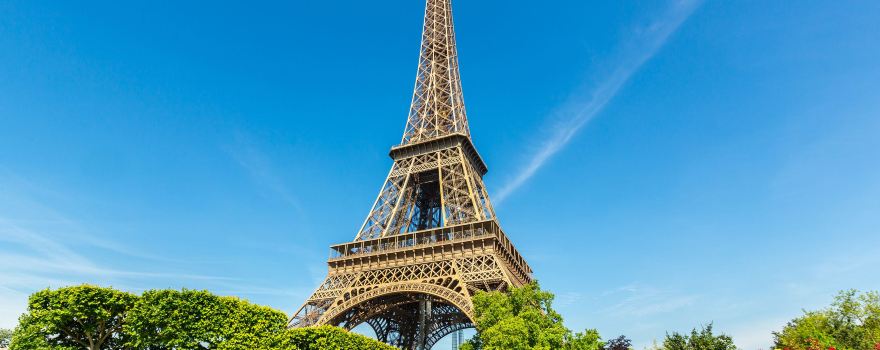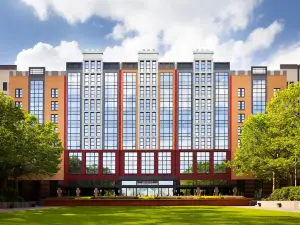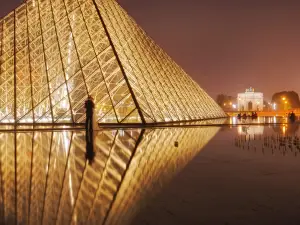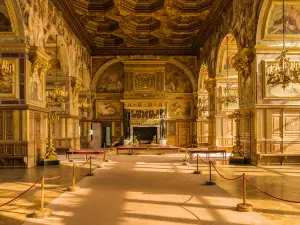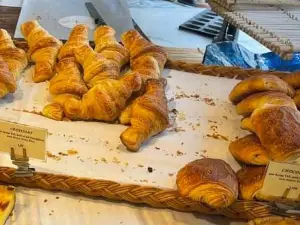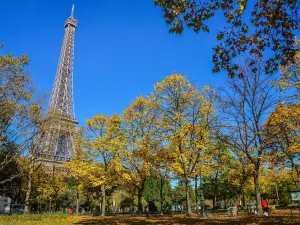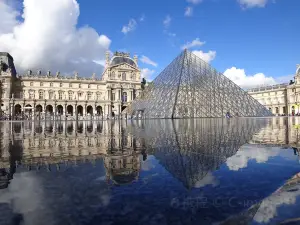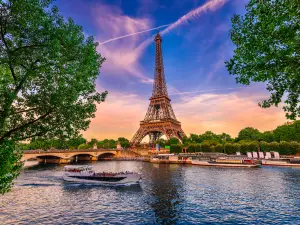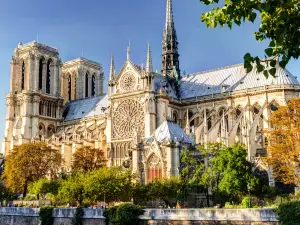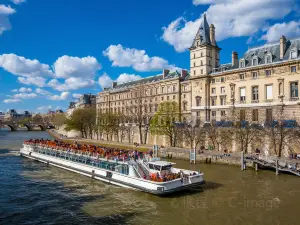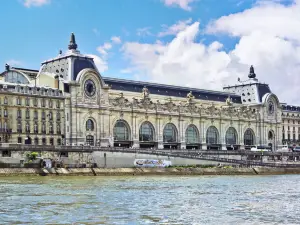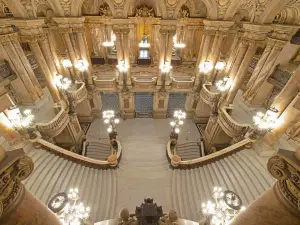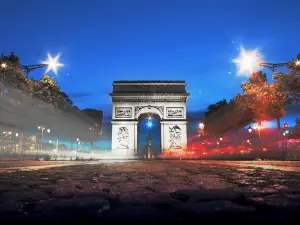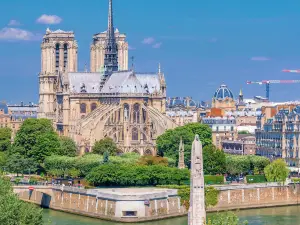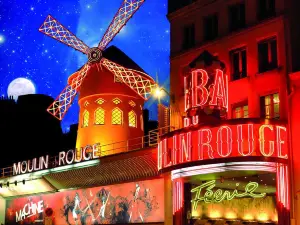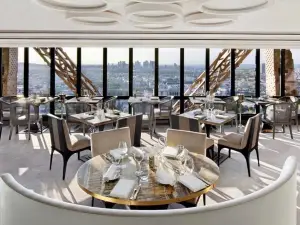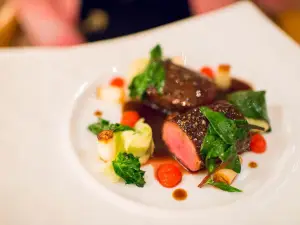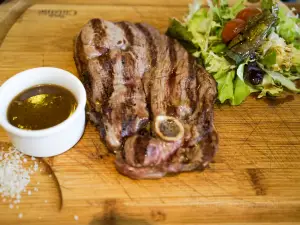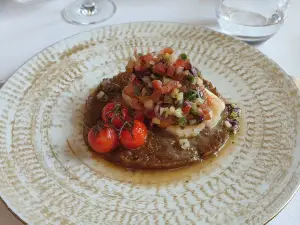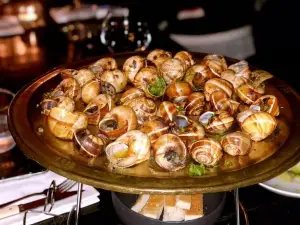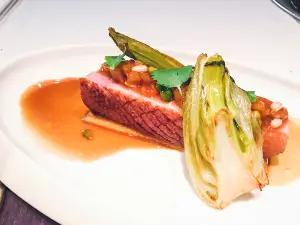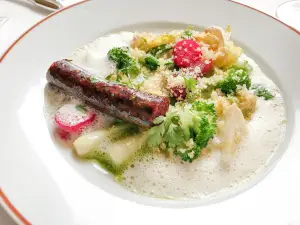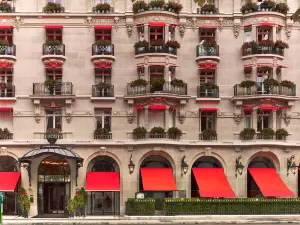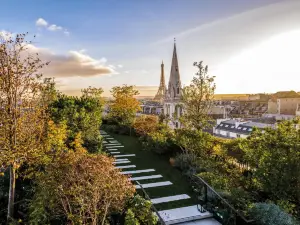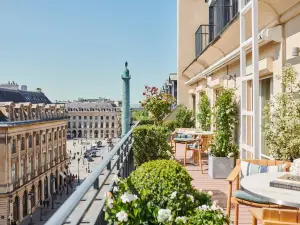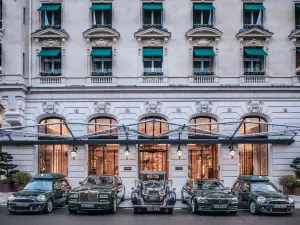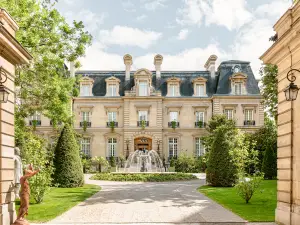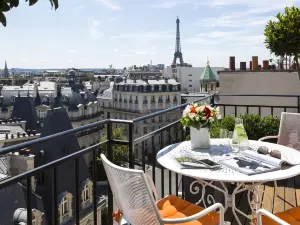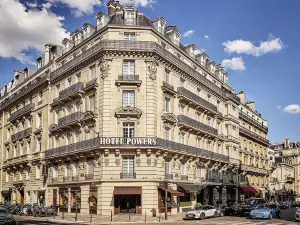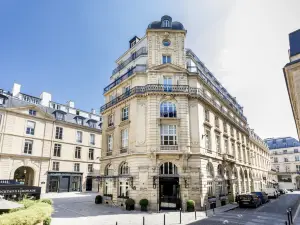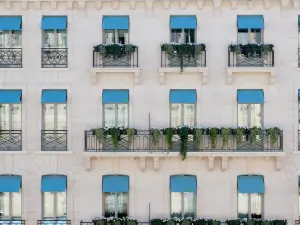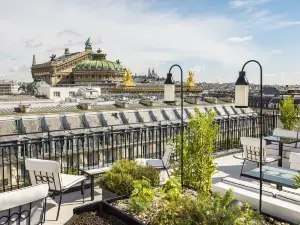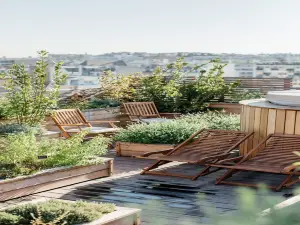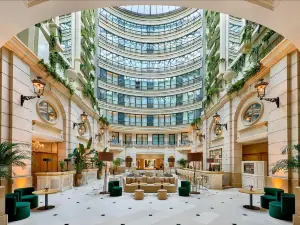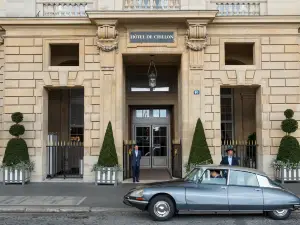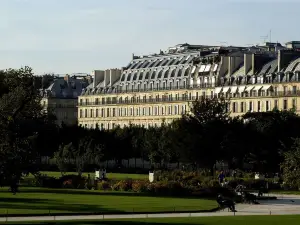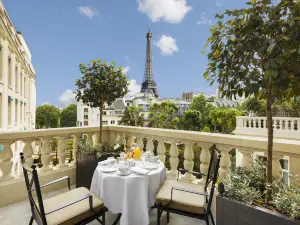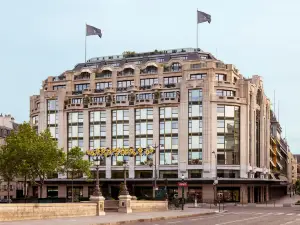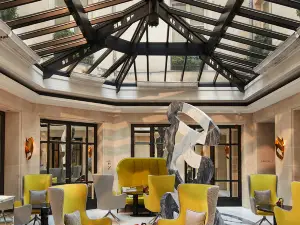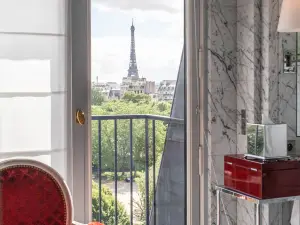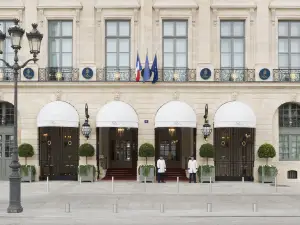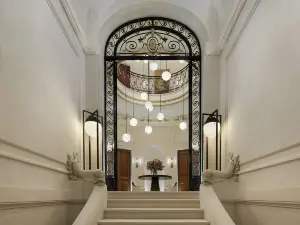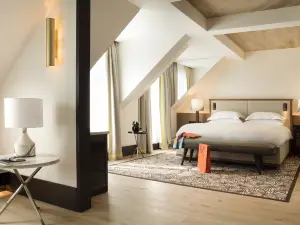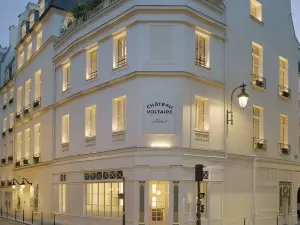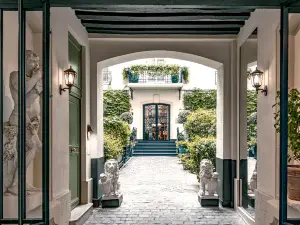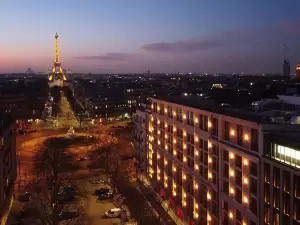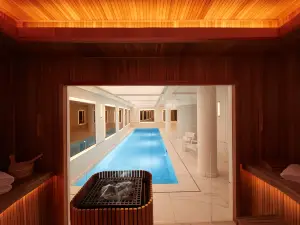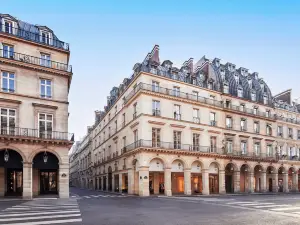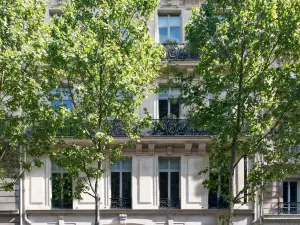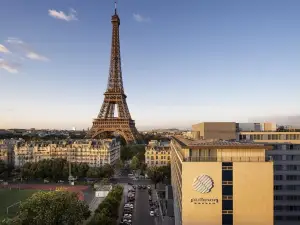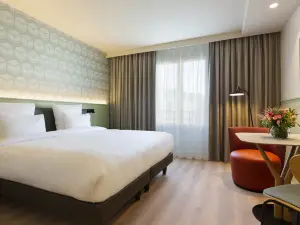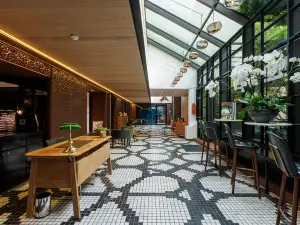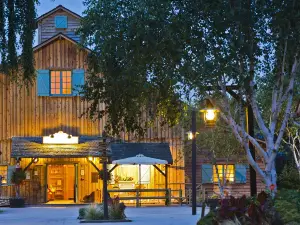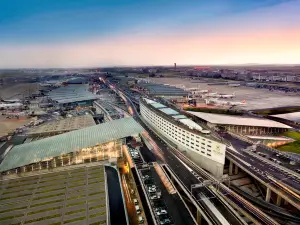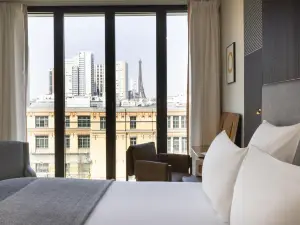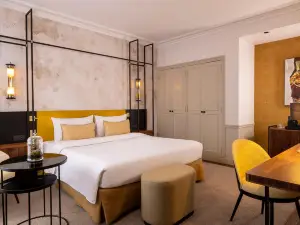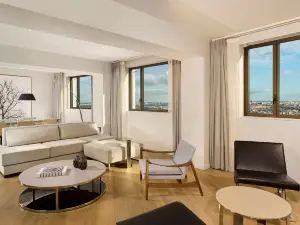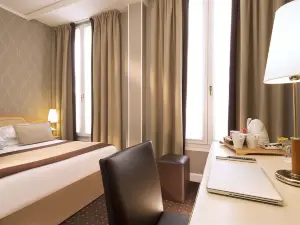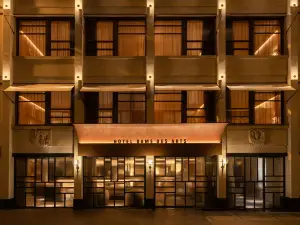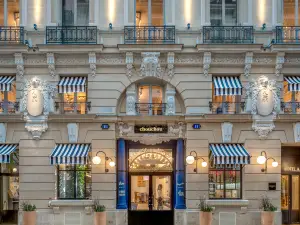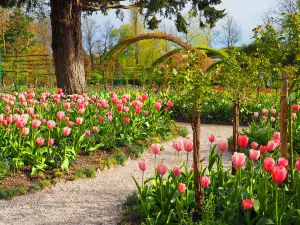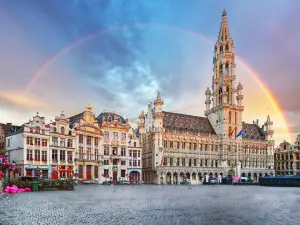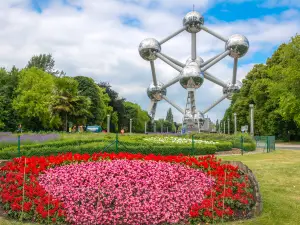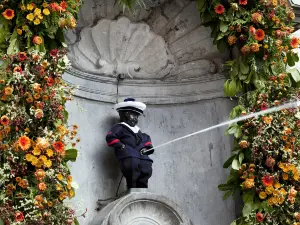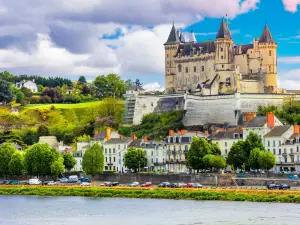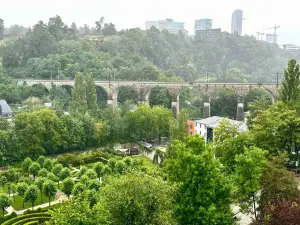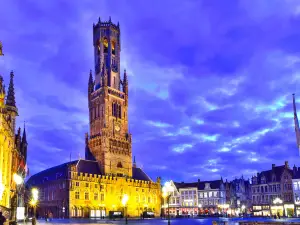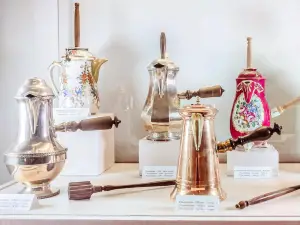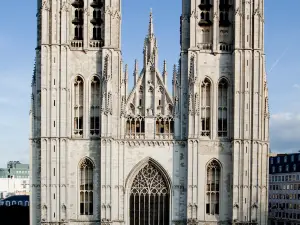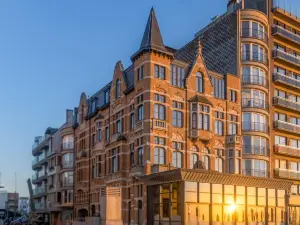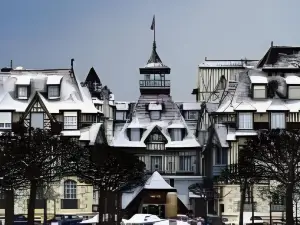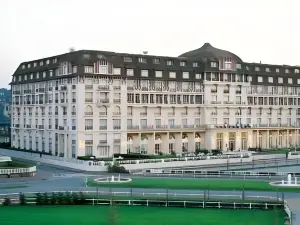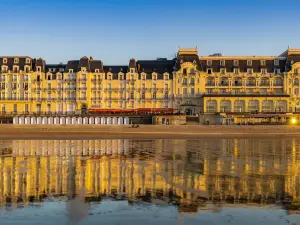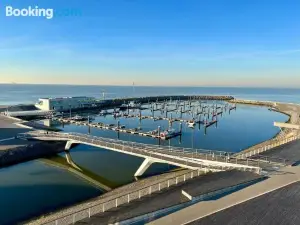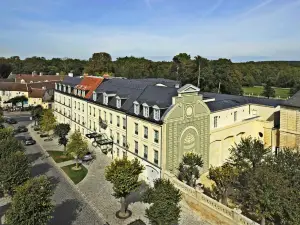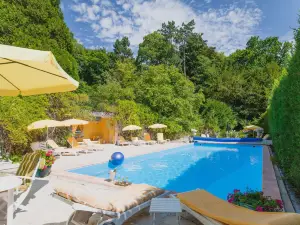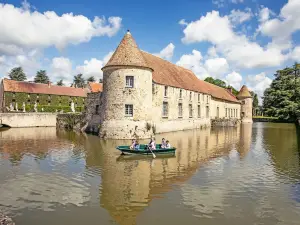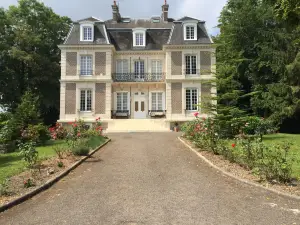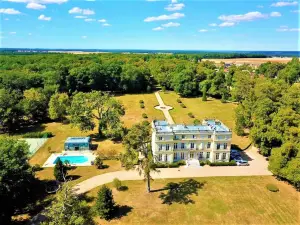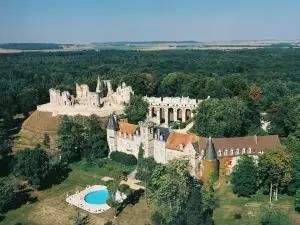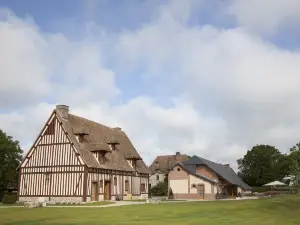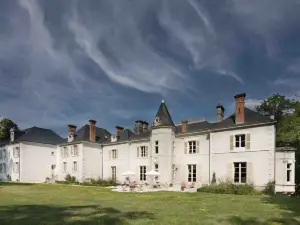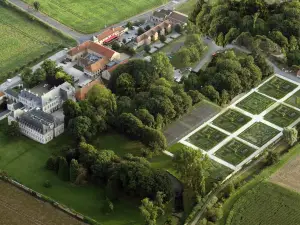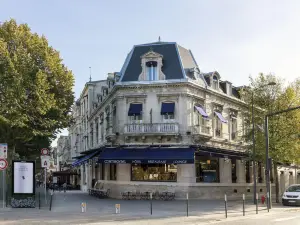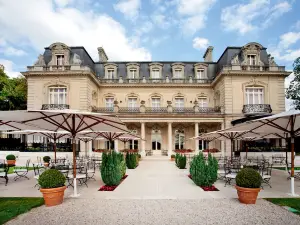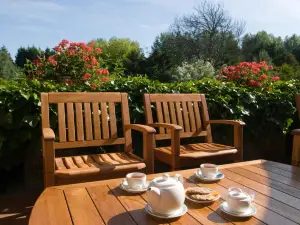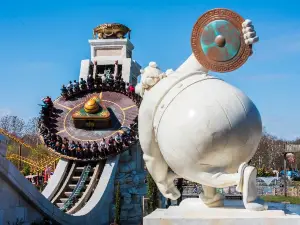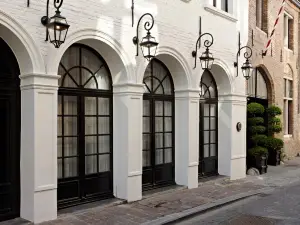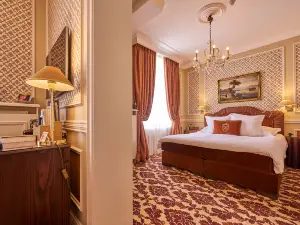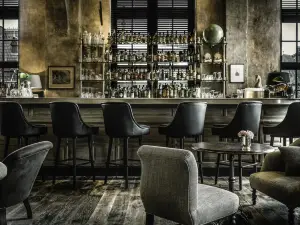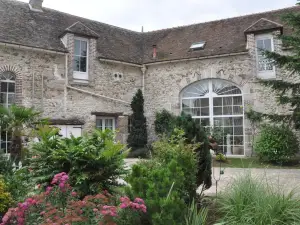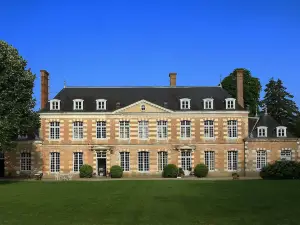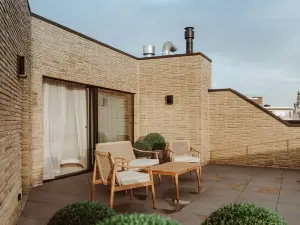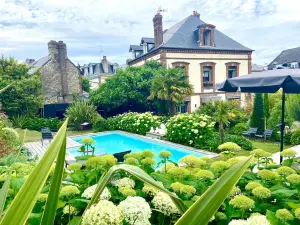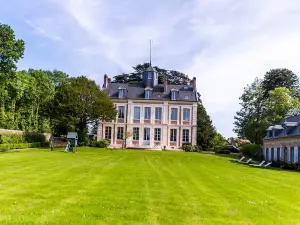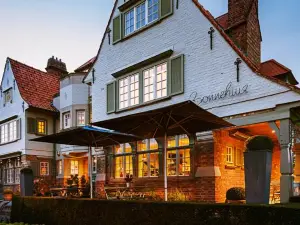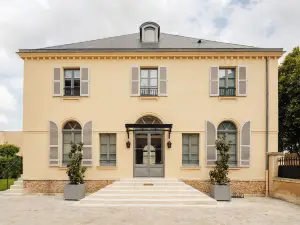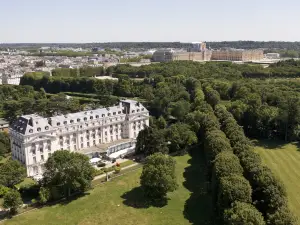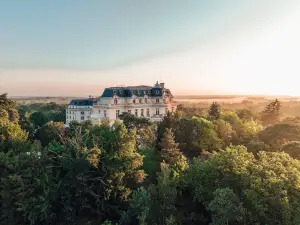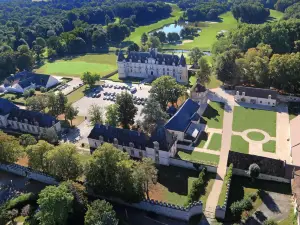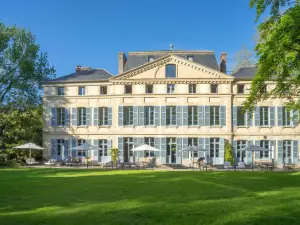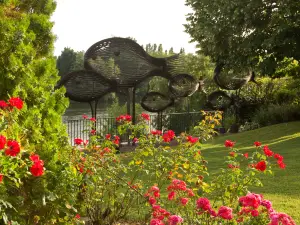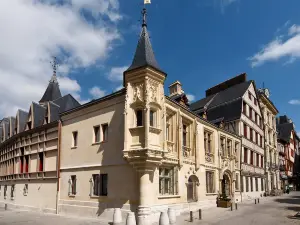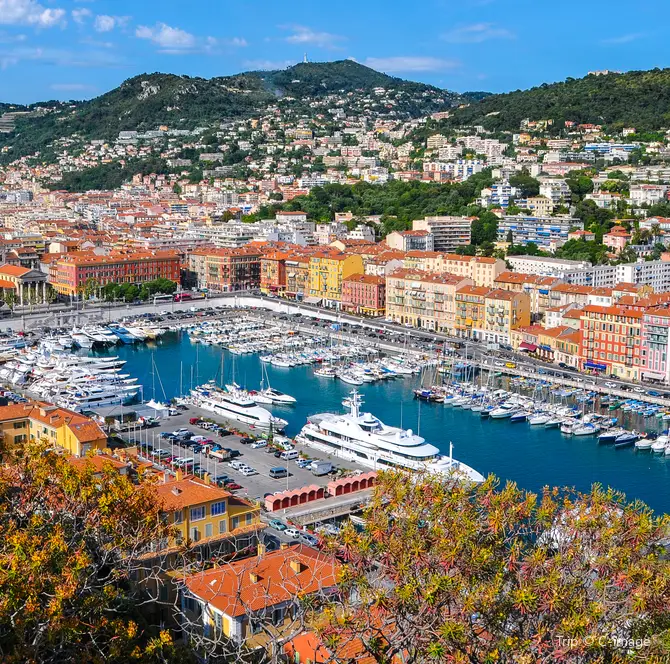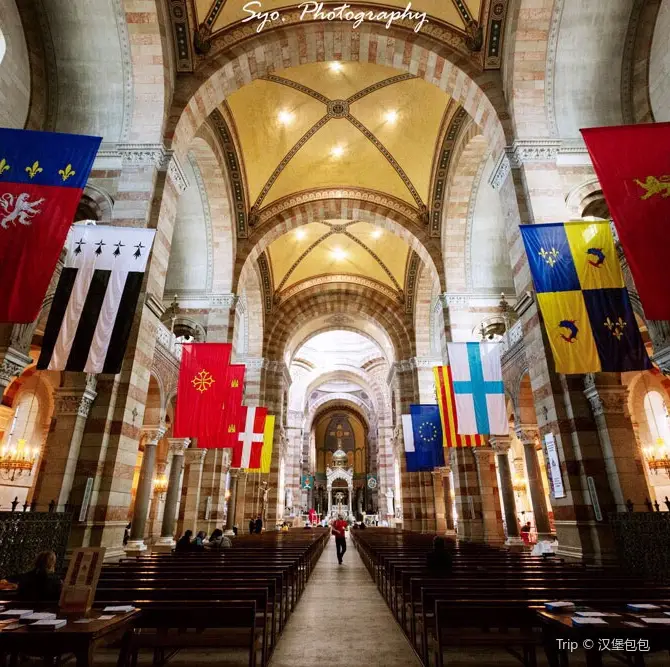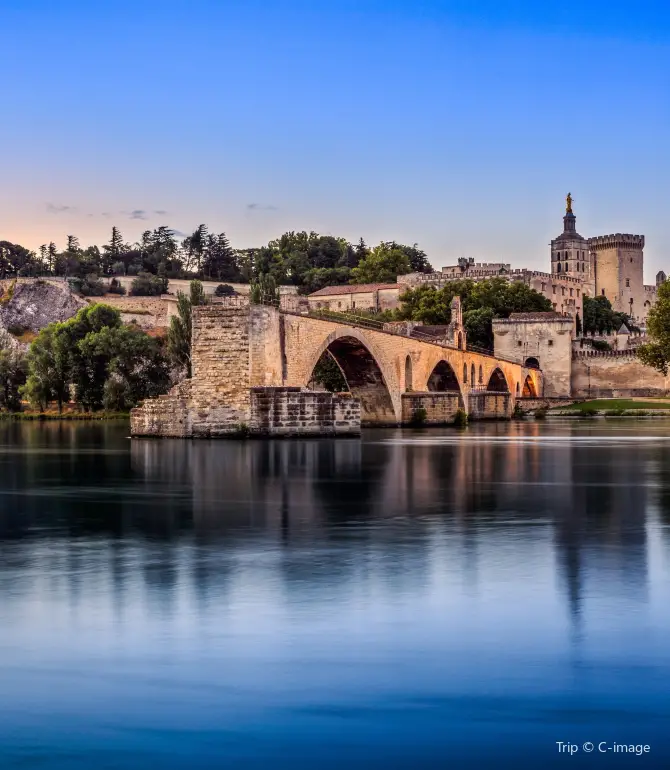Things to do in Paris (2025): Top nearby activities,popular attractions,itinerary planning,weather,accommodation,food,transportation,and more - all you need to know (updated October 2025) | Trip.com
About Paris
Recommended trip: 3–5 day(s)
Recommended trip: 3–5 day(s)Current weather conditions
Paris Local Experiences Map

Trending in Paris
Paris Local Travel Guide 2025
Paris Brief Guide
Paris is full of romance, history, and sheer beauty. Stroll Seine riverbanks, explore Notre-Dame’s revival, and savor the world-renowned cuisine in bistros along cobblestone lanes. Every part of Paris offers new flavors and stories. Craft your ideal trip with our local guide—discover Paris your way.
Paris Must-try local experiences
1. Skyline Views at Dusk Climb a Parisian tower—like the iron icon in the 7th arrondissement—just before sunset, when the city’s lights flicker to life and midday crowds thin out. Skip the top if lines drag; the mid-level view still sweeps from river to rooftops in dazzling quiet. 2. Gothic Grandeur Restored Step into Notre-Dame’s reborn splendor post its December 2024 reopening—gleaming limestone, soaring nave, and the Grand Organ’s roar await. Book a free slot via the app for quieter mornings; towers may reopen by summer 2025, but the interior alone stuns. 3. Riverside Strolls with Sweet Detours Stroll the Seine from Notre-Dame to Musée d’Orsay—river views unfold. Duck onto Île Saint-Louis for Berthillon ice cream—locals swear by its creamy kick. This quiet island feels far from the tourist buzz; Paris slows down here with every scoop. 4. Flea Market Treasure Hunts Skip tourist stalls for Les Puces de Saint-Ouen—northern Paris’s weekend flea market brims with vintage finds. Dig for old posters or quirky lamps; haggle a bit, then grab coffee amid dealer buzz nearby. It’s Paris unpolished and real. 5. Palatial Day Escapes Venture to a grand palace just outside Paris—like Versailles—for its mirrored halls and endless gardens. Pack a baguette, cheese, and wine for a picnic by the canal—a local trick to stretch the day amid royal splendor. 6. Opulent Stage Moments Catch a show at a gilded theater—like Palais Garnier—where opera or ballet meets jaw-dropping décor. Snag a budget seat for the vibe, or tour the halls to catch echoes of past performances; either way, it’s a Parisian dazzler. 7.Artistic Hilltop Rambles Wander Montmartre’s cobbled lanes—dodge the basilica bustle for Place des Abbesses or artists sketching at Place du Tertre. Its bohemian beat rings true; stop at La Mascotte for a raw, local bite—Paris’s artsy soul lives here. 8. Botanical Garden Retreats Unwind in a quieter green haven—like Jardin des Plantes in the 5th—beyond the city’s famed parks. Stroll past alpine blooms or 18th-century greenhouses still humming with research; the small zoo’s wallabies add a quirky twist to the calm. 9. Market Morsels and Wine Taste Paris at its simplest—skip touristy clichés and hit a bustling market like Marché Bastille on Thursdays or Sundays for warm crepes or a baguette with chèvre. Sip a glass of crisp wine at a no-frills bar nearby—Le Baron Rouge near Aligre keeps it real. 10. Vintage Cinema Nights Swap multiplexes for an Art Deco gem—like Le Louxor in the 10th—where restored 1920s charm frames French classics or indie films, often with English subtitles. Check for rooftop terrace openings; the Sacré-Cœur view up there trumps any souvenir snap. 11. Eclectic Neighborhood Roams Dive into Le Marais—browse vintage shops or chic boutiques, then gawk at the Centre Pompidou’s bold pipes-and-glass sprawl. Grab a falafel from a Rue des Rosiers standout like L’As du Fallafel—cheap, tasty, and pure Parisian street fuel. 12. Futuristic Park Playtime Ride the metro to a quirky park—like Parc de la Villette in the 19th—where red geometric follies and open lawns draw local crowds. Hop on Line 5; summer brings outdoor concerts or film screenings that light up the night with Parisian flair. 13. Soulful Cabaret Evenings Skip the glitzy tourist cabarets for a local haunt—like Le Caveau de la Huchette in the Latin Quarter—where jazz and swing fill a cozy cellar. Live bands and dancing have thrived here since the ‘40s; book ahead for a spot in this small, unpolished gem.
Paris Must-see Attractions
Paris doesn’t just show off—it unfolds, layer by layer, through its timeless landmarks. From a river that’s seen it all to a tower that defines the skyline, these are the spots that make the city hum—and they’ll linger in your memory long after you’ve left.
Paris Food Guide
Paris lives up to its food fame with every bite—classic, bold, or tucked away. Here’s what to sink your teeth into, from daily staples to dishes that linger in your dreams.
Paris Transportation
Paris is a global hub accessible by air, rail, road, and sea. By Air: Paris has three primary airports, with efficient public transport links to the city center. Paris-Charles de Gaulle Airport (CDG): ~35 km (22 miles) northeast, Roissy-en-France. Serves international and domestic flights. To the city center: RER B (regional train): To Gare du Nord or Châtelet-Les Halles (30–35 min, every 10–15 min). Buy tickets via the Île-de-France Mobilités app or the Navigo Easy card at CDG Terminal 2 or 3 stations. Included in Paris Visite/Navigo passes. RER B is the fastest and cheapest. RoissyBus: To Opéra (Garnier) (45–60 min, every 15–30 min). Tickets via the Île-de-France Mobilités app or at the airport. Taxi/Uber: to Zone 1 (45–60 min, €50–€70, fixed fare to central Paris). Book via the G7 app or taxi ranks at terminals. Paris Orly Airport (ORY): ~13 kilometers (8 miles) south of Paris, Orly. Serves domestic and international routes. To the city center: Orlyval + RER B: Orlyval shuttle to the Antony Station, then RER B to central Paris (35–45 min, every 5–10 min). Tickets via app or Navigo. Metro Line 14: Direct to Gare de Lyon or Châtelet Stations (25–30 min, every 4–8 min). Included in Paris Visite/Navigo passes. OrlyBus: To Denfert-Rochereau (30–45 min, €10, every 10–20 min). Tickets via app or Navigo. Taxi/Uber: To Zone 1 (30–45 min, €35–€50, fixed fare). Book via G7 or rank at terminals. Metro Line 14 is modern and quick; avoid Orlyval if transferring to the metro elsewhere to save time. Beauvais-Tillé Airport (BVA): ~85 km (53 miles) north of Paris, in Beauvais. Airport Shuttle Bus: There are 4 shuttle bus lines available: to Porte Maillot (the main shuttle, but may be rerouted; check the schedule online to confirm), to Saint-Denis Université, Paris La Défense, and Disneyland Paris—book online or at the airport upon arrival. TER Train: The Beauvais SNCF station is accessible by regional express train from the Gare du Nord station in Paris. Taxi/Uber: To Zone 1 (90–120 min, €170–€210). Pre-book via G7 for reliability. By Rail: Paris’s six main train stations are centrally located in Zone 1, serving international and domestic routes. All have metro, RER, and bus connections, with tickets via the Île-de-France Mobilités app (physical tickets still available). Gare du Nord (10th Arrondissement) serves international (Eurostar) and domestic locations. Gare de l’Est (10th Arrondissement) serves international and domestic locations. Gare de Lyon (12th Arrondissement) serves international and domestic locations. Other Stations: Gare Saint-Lazare (northwest, Zone 1, domestic to Normandy), Gare Montparnasse (southwest, Zone 1, to Bordeaux), and Gare Austerlitz (southeast, Zone 1, to Lisbon). By Road: Buses offer budget-friendly access, but driving is discouraged due to congestion and parking costs. Paris Gallieni International Bus Station (Bagnolet, Zone 3): International/Domestic: FlixBus to Brussels, Barcelona, or Bordeaux. Book via flixbus.com. Connects to the city center via Metro line 3, bus, or taxi. Bercy Seine (2 miles southeast, Zone 1) serves FlixBus/Blablabus; Pont de Levallois (4 miles northwest, Zone 3) for some international routes.
Paris Where to Stay
Paris’s neighborhoods each play their own note, shaping where you’ll decide to stay into something personal. From landmark shadows to cobblestone quirks, here’s a rundown of spots to call home—each with a vibe that fits different wanderers.
Paris Best Time to Visit
Paris is a year-round destination, but spring and autumn offer the best balance of mild weather, fewer crowds, and vibrant events for sightseeing. Summer is lively but crowded and pricier, while winter provides festive charm and budget savings, though colder and wetter. Spring (March-May): A prime season with mild temperatures (10-20°C) and blooming gardens like Luxembourg or Tuileries, perfect for strolling along the Seine or visiting the Louvre. Cherry blossoms in Parc de Sceaux and outdoor cafés in Le Marais add charm. Early spring (March) sees fewer tourists and lower hotel rates. Expect occasional rain, so pack an umbrella. This season balances pleasant weather and manageable crowds for iconic sites. Summer (June-August): Peak season brings warm weather (20-30°C) and long daylight hours, ideal for picnics by the Seine or exploring Montmartre. Major events like Bastille Day (July 14) with fireworks at the Eiffel Tower and Paris Plages (pop-up beaches) attract huge crowds, spiking hotel prices. August is quieter as locals vacation, but landmarks like Versailles remain packed. Heatwaves are possible, and some local shops or restaurants may close. Book accommodations early for the best deals. Autumn (September-November): Another excellent time with cooler temperatures (10-20°C) and stunning fall foliage in places like Père Lachaise Cemetery or Jardin des Plantes. Paris Fashion Week (September/October) adds glamour, while Nuit Blanche (art festival, October) offers unique nightlife. Crowds thin out compared to summer, and hotel rates drop, especially in October. Rain increases in November, but indoor attractions like the Musée d’Orsay shine. This season is ideal for budget-conscious travelers seeking cultural immersion. Winter (December-February): Cold (0-10°C) with occasional rain or light snow, but Paris glows with festive charm. Christmas markets along Champs-Élysées and ice skating at Hôtel de Ville create a magical vibe. New Year’s Eve celebrations at the Arc de Triomphe draw crowds, but winter is generally quieter, with shorter lines at museums like the Centre Pompidou. January and February offer budget-friendly rates outside holiday periods. Bundle up for walking tours and enjoy cozy cafés in Saint-Germain.
Paris Travel Tips
1. Pay Attention when Booking the Louvre The Louvre’s a must, but it’s closed Tuesdays, January 1, May 1, and December 25—so plan around that. Snag tickets online to skip the epic lines—entry’s timed now, and mornings (9-11 AM) are quieter. Stuck on a Tuesday? Hit the Musée d’Orsay instead; it’s just as stunning with shorter queues. 2. Dress Smart for Churches Places like Notre-Dame and Sacré-Cœur expect modesty—no shorts, bare shoulders, or hats inside. Enforcement’s light (a polite nudge at most), but pack a scarf or light jacket to toss on. Locals do it all the time—keeps you cool and respectful. 3. Outsmart the Pickpockets Crowds at the Eiffel Tower, Métro, and Louvre draw nimble fingers. Skip backpacks for a crossbody bag, keep your phone zipped up, and stash cash in a front pocket. Watch for the ‘lost ring’ scam—someone ‘finds’ a ring, chats you up, then asks for money. Just smile and walk on; Paris is safe if you’re sharp. 4. Ride the Métro with Ease Pick up a Navigo Easy card with a small fee at stations and load it with a batch of rides—cheaper and sturdier than paper tickets that might fail in your pocket. Steer clear of peak hours in the early morning or late afternoon unless you crave the crush; stand right on escalators, walk left—or brace for a soft “pardon” from locals. 5. Eat Well Without Breaking the Bank Skip tourist traps near grand churches where sandwiches cost a fortune—scout boulangeries for a cheap pain au chocolat or nab a falafel in Le Marais from a spot like L’As du Fallafel. Locals hit supermarkets for premade quiche or salads, then perch by the Seine for a quick, tasty bite. 6. Mind the No-Smoking Zones France loves a cigarette, but smoking’s banned on Métro platforms, train stations, and café terraces since 2024’s tighter rules. Fines start at €68 if you light up—vaping too. Step away from crowds or ask a local for a discreet spot; Parisians are chill if you’re polite. 7. Pack for Paris Weather It’s damp and shifty—think 10°C (50°F) and drizzle in February, or 25°C (77°F) with sticky humidity in July. Layers are your friend, plus a €5 umbrella from a corner shop. Parisians carry totes for sudden showers; you should too. 8. Skip the Cab, Take the Bus Taxis from the airport can gouge to the city center, but a shuttle like the Roissybus lands you at Opéra with change to spare—comfy and scenic in under an hour. In town, hop a bus like the 69 route for Eiffel-to-cemetery views at Métro fare rates; locals savor the ride, and you will too. 9. Dodge the Bracelet Scam Around Sacré-Cœur or the Eiffel Tower, watch for smiling strangers offering a "free" bracelet. They’ll tie it on quick—then demand €5-10, sometimes with guilt trips or pressure. Politely say "non, merci" and keep walking before they start; don’t let them grab your arm. It’s a classic Paris hustle—stay firm and you’re fine.
Paris Useful Guide
French is the primary language in Paris. Parisian French has a distinct accent, but it’s standard and easily understood. English Usage: English is widely spoken in tourist-heavy areas, with signage, menus, and guides often available in English at major attractions, hotels, and restaurants. Younger Parisians and service staff in central districts typically speak basic-to-fluent English, but proficiency may be limited in less touristy areas. Learning basic French phrases like “Bonjour” (Hello), “Merci” (Thank you), or “Parlez-vous anglais?” (Do you speak English?) is appreciated and enhances interactions. A translation app like Google Translate is recommended for navigating smaller cafés or local markets.
Trip.Best: Paris
Things to do in Paris
What to do
Where to stay
What to eat
Paris Moments: Through Travelers' Eyes

Paris Photoshoot|Stroll from a café to the Seine Riverbank under the Eiffel Tower

Hotel Mademoiselle Paris 🇫🇷🏩🥐 France

Sunrise at the Louvre

Paris filled with romantic vibes
![[Louvre Museum | A long letter of civilization deep in the stone wall]](https://ak-d.tripcdn.com/images/1mi0i224x94fcivp404E4_W_320_0_R5.jpg?proc=source/trip)
[Louvre Museum | A long letter of civilization deep in the stone wall]

10 Stunning Camera Spots at the Eiffel Tower Revealed! Easily Create a French Cinematic Look 📸

At Cheval Blanc, capture a slice of midsummer

SO/ Paris Hotel
Best of Paris
About
Site Operator: Trip.com Travel Singapore Pte. Ltd.
